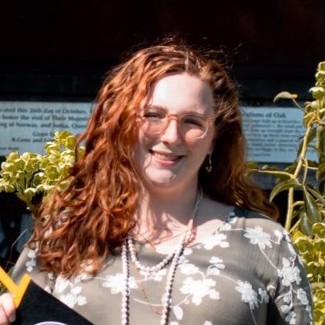Drug Delivery
(K-432) Pre-formed vesicle-mediated delivery of messenger RNA for retinal gene therapy

Michael I. Henderson, B.A. (he/him/his)
Graduate Student
Oregon Health & Science University
Portland, Oregon, United States
Yulia Eygeris, Ph.D.
Analystical Chemist/Scientist
Oregon State University/Oregon Health & Science University - College Of Pharmacy
Portland, Oregon, United States- WT
Wayne Tschetter
Assistant Staff Scientist
Oregon Health & Science University
Portland, Oregon, United States 
Kathleen Chirco, Ph.D.
Assistant Professor
Oregon Health & Science University
Portland, Oregon, United States
Allison Curtis
Senior Research Assistant
Oregon Health & Science University
Portland, Oregon, United States- JS
Jonathan Stoddard
Senior Research Associate
Oregon Health & Science University
Portland, Oregon, United States 
Antony Jozic
Graduate Student
Oregon State University/Oregon Health & Science University - College Of Pharmacy
Portland, Oregon, United States- IF
Ian Fries
Research Assistant
Oregon Health & Science University
Portland, Oregon, United States 
Renee C. Ryals, Ph.D.
Assistant Professor
Oregon Health & Science University
Portland, Oregon, United States
Gaurav Sahay, Ph.D.
Professor
Oregon State University/Oregon Health & Science University - College Of Pharmacy
Portland, Oregon, United States
Presenting Author(s)
Co-Author(s)
Primary Investigator(s)
Materials and Methods:
Preparation of initial pre-formed lipid vesicles (PFVs) involved standard microfluidic mixing of aqueous and lipid solutions at a 3:1 volumetric ratio. After mixing, PFVs were dialyzed against a citrate buffer (50 mM, pH 4) for 24 hours and subsequently concentrated. PFVs then underwent a second microfluidic mixing step, combining them with respective mRNA solutions (Fluc, Cre, EGFP) at a 3:1 volumetric ratio to yield PFV-LNPs. The PFV-LNPs were dialyzed twice using phosphate buffer saline (PBS, pH 7.4). For comparison, standard LNPs were prepared using a two-phase microfluidic mixing method as a control. Characterization of the LNPs included assessing hydrodynamic size, charge, cargo encapsulation efficiency, lipid packing, and CryoTEM to visualize morphology.
To evaluate transfection and endosomal escape capabilities, Fluc mRNA-containing PFV-LNPs were tested in four cell lines: HeLa (human cervical epithelial cells), ARPE19 and 661W (retina cell models), and HEK293T/17 cells. Additionally, mRNA transfection was examined in human induced pluripotent stem cell (iPSC) retinoids.
After confirming successful transfection in various models, intravenous and subretinal mRNA delivery was assessed in BALB/c, Ai9, and 129X1 murine models. Subretinal injections were specifically performed in Ai9 and 129X1 models. Furthermore, subretinal mRNA delivery was then evaluated in non-human primate models.
Results, Conclusions, and Discussions:
In this study, we explored the applicability of solvent-free mixing for encapsulating mRNA in lipid-based nanoparticles (LNPs) and delivering them to the posterior segment of the eye. Lipid-based platforms for mRNA delivery require distinct considerations compared to small interfering RNA (siRNA), as mRNA molecules are longer, single-stranded, and possess more accessible phosphate groups.
We observed significant deviations in size, architecture, and lipid density at the lipid membrane-nucleic acid interface of PFV-LNPs, which result from the formation of large pockets containing mRNA and a more hydrated lipid membrane. This unique morphology during the fusion-rupture event of mRNA-lipid complexation differs from other nucleic acid carriers.
Furthermore, our investigation highlights intriguing insights into the nature of mRNA-lipid complexation during the fusion-rupture event with potential to confer unique advantages for delivery. Notably, this distinctive morphology was beneficial for local administration, particularly for subretinal injection of mRNA. These findings underscore the importance of cargo packing in the development of future non-viral retinal therapeutics. Overall, our study provides valuable insights into the behavior of mRNA-lipid complexes and displays the potential of the solvent-free mixing approach for retinal gene therapy.
Acknowledgements (Optional): We would like to thank the Casey Eye Institute, Leonard Christenson Eye Pathology Laboratory for their support with tissue processing and sectioning. Electron microscopy was performed with technical support from Steven Adamou at the Multiscale Microscopy Core (MMC), Oregon Health & Sciences University. We also thank Jeonghwan Kim for supportive discussions. Some illustrations were created with BioRender.com.
This project was supported through funding from the National Heart Lung and Blood Institute (NHLBI) 1R01HL146736-01 (G.S.), SAHAY 19XX0 (G.S.), and the National Eye Institute (NEI) R21EY031066-02.
References (Optional):
